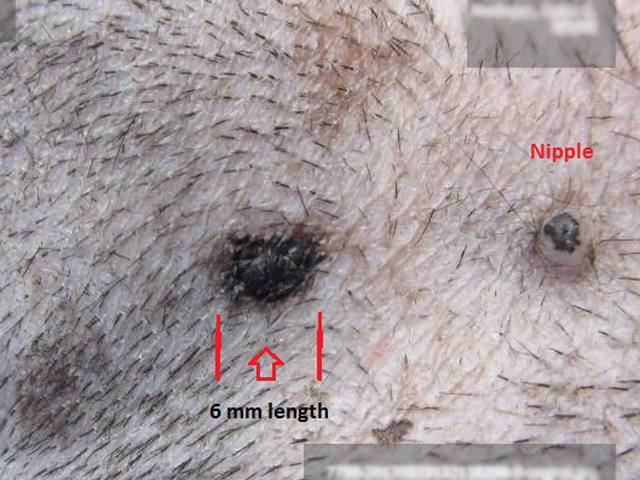Yes, dogs can get moles. Moles are growths on the skin that can be caused by a variety of things, including sun exposure, genetics, and trauma.
Dogs can develop moles anywhere on their body, but they are most commonly found on the head, neck, and legs.
While most moles are benign (not cancerous), some can become malignant over time. If you notice a mole on your dog, it’s important to have it checked out by a veterinarian to ensure it isn’t something more serious.
Is It Normal for Dogs to Grow Moles?
Moles are relatively common in dogs, and while they may cause some owners concern, they are generally harmless. Most moles appear as small, black, or brown growths on the skin, and while they can occur anywhere on the body, they are most commonly found on the head, neck, or legs.
While moles can be present at birth, they more typically develop as a dog ages. There is no real consensus on what causes moles in dogs (or people, for that matter), but it is believed that they result from an overgrowth of pigment-producing cells in the skin. Moles are not cancerous and do not pose any health threat to your dog. In fact, most dogs with moles live normal, healthy lives.
What Do Cancerous Moles Look Like on a Dog?
One of the most common types of cancer in dogs is skin cancer, which can manifest as a mole. While not all moles are cancerous, it’s important to be able to identify the signs of cancer in a mole so that you can get your dog treatment as soon as possible. Here are some things to look for:
- A change in size: If you notice that a mole on your dog has gotten larger, it could be a sign of cancer.
- A change in color: Cancerous moles will often change color, becoming darker or lighter than the surrounding skin.
- A change in shape: Moles that become irregular or start to bleed are also caused for concern.
- Itching or bleeding: If your dog is scratching at the mole or if it seems to be bleeding, this could also be a sign that something is wrong.
If you notice any of these changes in a mole on your dog, make an appointment with your veterinarian right away. They will likely want to do a biopsy to determine whether or not the mole is cancerous and, if so, what type of treatment is necessary.
Can Dogs Get Moles Or Skin Tags?
There are a few ways to tell if your dog has a mole or skin tag. If the growth is on their head, neck or body and is raised above the surface of the skin, it’s likely a mole.
Moles are usually black or brown and can be round or oval-shaped. Skin tags, on the other hand, are more likely to be found on the underside of your dog’s body and they’re usually flesh-colored.
They can be small or large, but they’re always flat against the skin.

Credit: hhvh.net
Can Dogs Get Moles on Their Belly?
Sure, dogs can get moles on their belly. In fact, they can get moles anywhere on their body where there is hair.
Just like people, the vast majority of these moles are benign and pose no threat to your dog’s health. However, it is important to have your veterinarian check any new growths on your dog, just to be sure.
Pink Mole on Dog
If you’ve ever noticed a pink mole on your dog, you may be wondering what it is and if it’s cause for concern. A pink mole is usually nothing to worry about and is simply a result of the concentrations of pigments in the skin.
However, if the mole changes color, size, or shape, it could be indicative of a more serious issue and you should have your veterinarian take a look at it.
Conclusion
Yes, dogs can get moles. Just like humans, dogs can develop benign growths on their skin called moles. Moles are usually black or brown and can be found anywhere on the body.
They are not dangerous and do not need to be removed unless they are causing your dog discomfort.